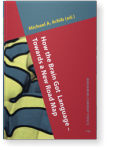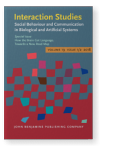Uwe Seifert
List of John Benjamins publications for which Uwe Seifert plays a role.
2020 The comparative neuroprimatology 2018 (CNP-2018) road map for research on How the Brain Got Language How the Brain Got Language – Towards a New Road Map, Arbib, Michael A. (ed.), pp. 370–387 | Chapter
We present a new road map for research on “How the Brain Got Language” that adopts an EvoDevoSocio perspective and highlights comparative neuroprimatology – the comparative study of brain, behavior and communication in extant monkeys and great apes – as providing a key grounding for hypotheses on… read more
2020 Relating the evolution of Music-Readiness and Language-Readiness within the context of comparative neuroprimatology How the Brain Got Language – Towards a New Road Map, Arbib, Michael A. (ed.), pp. 86–101 | Chapter
Language- and music-readiness are demonstrated as related within comparative neuroprimatology by elaborating three hypotheses concerning music-readiness (MR): The (musicological) rhythm-first hypothesis (MR-1), the combinatoriality hypothesis (MR-2), and the socio-affect-cohesion hypothesis… read more
2018 The comparative neuroprimatology 2018 (CNP-2018) road map for research on How the Brain Got Language How the Brain Got Language: Towards a New Road Map, Arbib, Michael A. (ed.), pp. 370–387 | Article
We present a new road map for research on “How the Brain Got Language” that adopts an EvoDevoSocio perspective and highlights comparative neuroprimatology – the comparative study of brain, behavior and communication in extant monkeys and great apes – as providing a key grounding for hypotheses… read more
2018 Relating the evolution of Music-Readiness and Language-Readiness within the context of comparative neuroprimatology How the Brain Got Language: Towards a New Road Map, Arbib, Michael A. (ed.), pp. 86–101 | Article
Language- and music-readiness are demonstrated as related within comparative neuroprimatology by elaborating three hypotheses concerning music-readiness (MR): The (musicological) rhythm-first hypothesis (MR-1), the combinatoriality hypothesis (MR-2), and the socio-affect-cohesion hypothesis… read more

